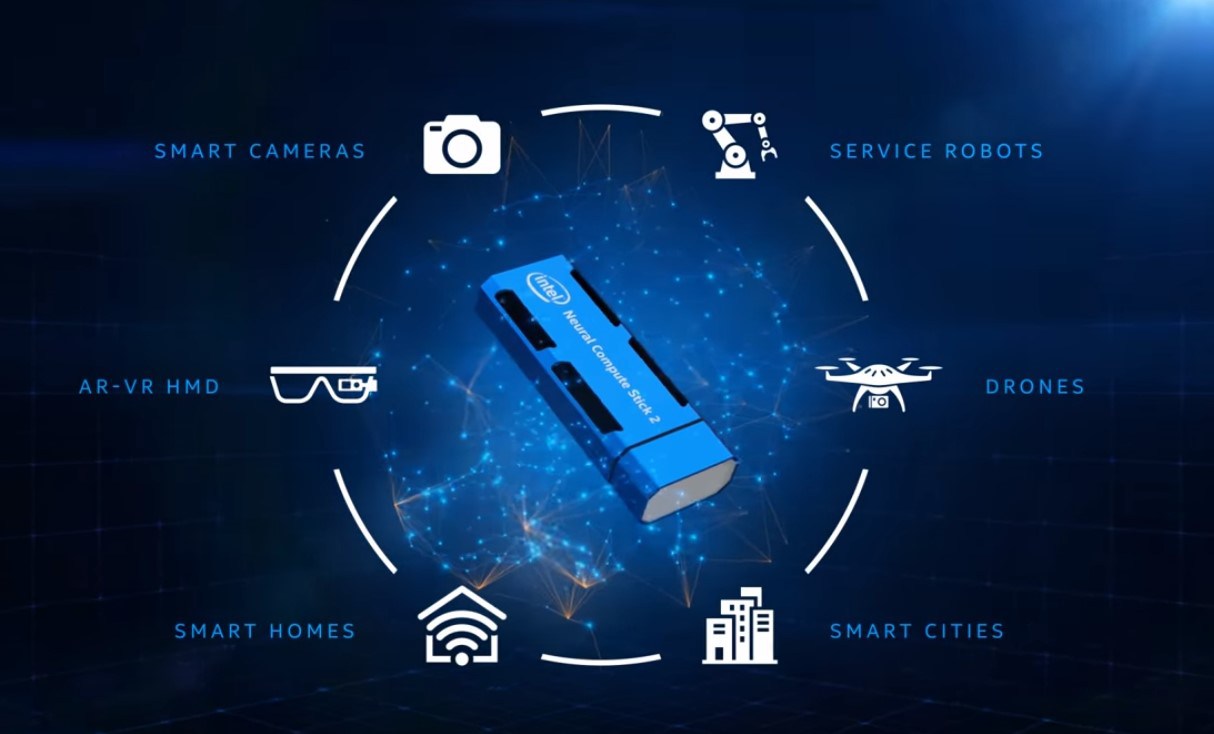
Intel has just announced that it is in the process of putting artificial intelligence into smart home gadgets in order to make things faster and easier. How are they doing this? By way of their latest invention: the Neural Compute Stick 2. Edge devices are generally defined as any piece of hardware that controls the flow of data between the boundaries of two networks. This includes – not just routers, switches and gateways – but also a range IoT gadgets like Ring doorbell cameras, industrial robots, smart medical devices or self-guided camera drones. Intel’s NCS2 is essentially a self-contained neural network on a thumb drive and should make developing those sorts of devices faster and easier by offloading much of the processing power required to train them to its onboard Movidius Myriad X vision processing unit(VPU).
It’s very interesting to me to see what people are using artificial intelligence to do. But this isn’t just programming your coffee maker to brew you a pot of coffee when you wake up. This enables you to develop artificial intelligence algorithms and computer vision systems on your laptop, without needing a connection to the Cloud or the internet. All you need is to be able to run a Linux-based OS with a USB 3.0 port. What’s great is that the NCS2 has added processing cores that will enable it to perform eight times faster than its predecessor – which was released last year.
Intel has already pre-released the NCS2 to a handful of developers who’ve used it to develop a variety of helpful applications including Clean Water AI, which combines machine vision with a microscope to detect harmful bacteria in water; BlueScan AI, which scans skin for signs of melanoma; and ASL Classification, which translates American Sign Language into text — all in real-time. These are all really incredible ways of changing the way that the world works. And I don’t say that lightly. Being able to have your coffee maker start for you first thing in the morning is incredible, and something that might seem impossible. But this device is taking it to the next level.
Think about the applications that have already been developed. With these applications, in theory, no one will have to be exposed to harmful water. Instead of sending your water to a lab to be tested, which can take weeks, or months depending on where you live, you will now have this information in seconds. Taking that one step further, though, this technology might give people the ability to be able to determine if they have melanoma. Which, in theory, is just a stepping stone for other types of cancers and diseases. I guess what I’m trying to say is that this technology has improved and I think it will only bring good news in the next couple of years. Or at least I hope it will.
Not only that, but the device is kind of cheap. The NSC2 retails for $100 and is available through Intel’s distributors. There aren’t any restrictions on who can buy one of these devices. This might be a good thing since it will lead to better improvements to our existing IoT in ways that we haven’t considered yet.
